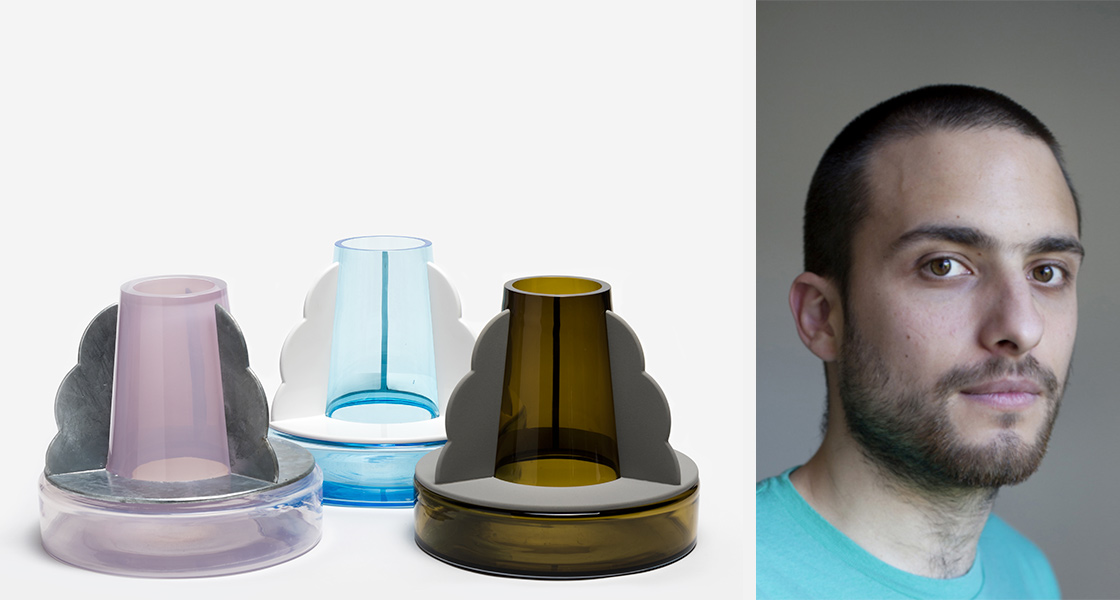Rising Talent Awards France — January 2020
Published on 26 November 2019
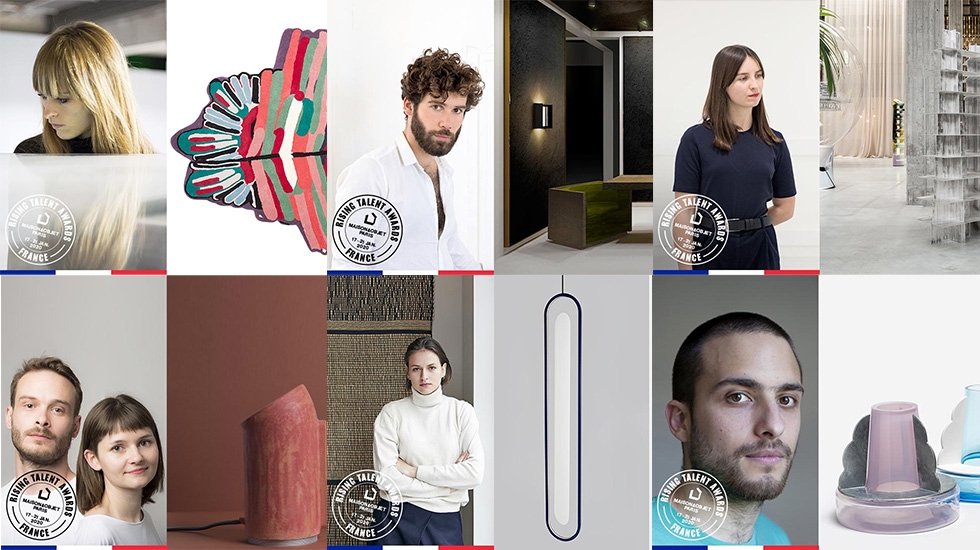
After Italy, Lebanon, China and United States in recent times, this season’s Rising Talent Awards are celebrating 5 designers and a duo from France, selected by an acclaimed jury, under the auspices of the French Ministry of Culture.
ADRIEN GARCIA
Nominated by interior designer, Pierre Yovanovitch.
After studying at ENSCI Les Ateliers in Paris and the University of Arts in Berlin, Adrien Garcia worked for five years for an interior design practice specialized in wellness and spa projects. He set up his own firm in 2019 and is currently in the process of developing his debut furniture collection.
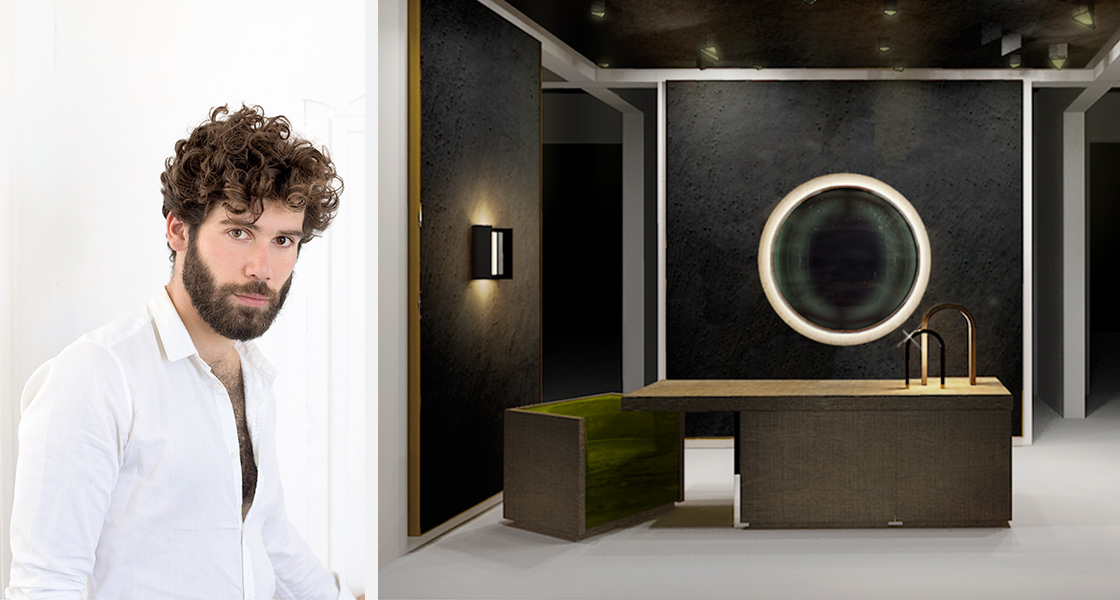
You split your time between Paris and a 17th-century château in the west of France. What can you say about the latter?
I have a house near Nantes, which is quite austere with an architecture that’s quite radical for the time it was built. It’s 17th century, but with a quite drastic modernity in its window placement and its use of light. It’s pretty rundown and has large spaces. I’m not sure I’ll ever completely renovate it. I need its empty, slightly dilapidated spaces in which to dream and imagine new things.
How would you describe your style?
All my furniture has quite elaborate joinery and is pretty sculptural. I’m not looking to create things that are of the moment. It’s not something that interests me at all. I spent each summer of my childhood in the south of France, surrounded by Land Art and am inspired the artists like Andy Goldsworthy, Donald Judd, Richard Serra and Thomas Schütte. All the materials I use are more or less natural. If not, they’re either recycled or repurposed by an artisan. I have a really, really big aversion to plastic. I can’t stand it. Instead, I prefer to use oak and have my own trees in the forest on my property. Otherwise, I’m also a fan of steel. I like the fact that it’s a solid, honest material.
In your work, you place a particular importance on craftsmanship and on things being 100% Made in France. Why?
I think we have quite incredible savoir-faire in France. I really want to maintain a dialogue with artisans because you can really learn from them and if they’re French, we speak the same language. Plus, what I like is the ability to create things immediately. If they were on the other side of the world, that wouldn’t be a possibility.
JULIE RICHOZ
Nominated by dealer, Didier Krzentowski.
The Franco-Swiss designer won the Jury Grand Prix at the Design Parade at the Villa Noailles in 2012 and the Swiss Design Award in 2015. She assisted Pierre Charpin for three years before setting up her own firm, since when she has created objects and furniture for manufacturers such as Louis Poulsen, Tectona and the Manufacture de Cogolin. Her work is also represented by the Galerie kreo in Paris and the Libby Sellers Gallery in London.
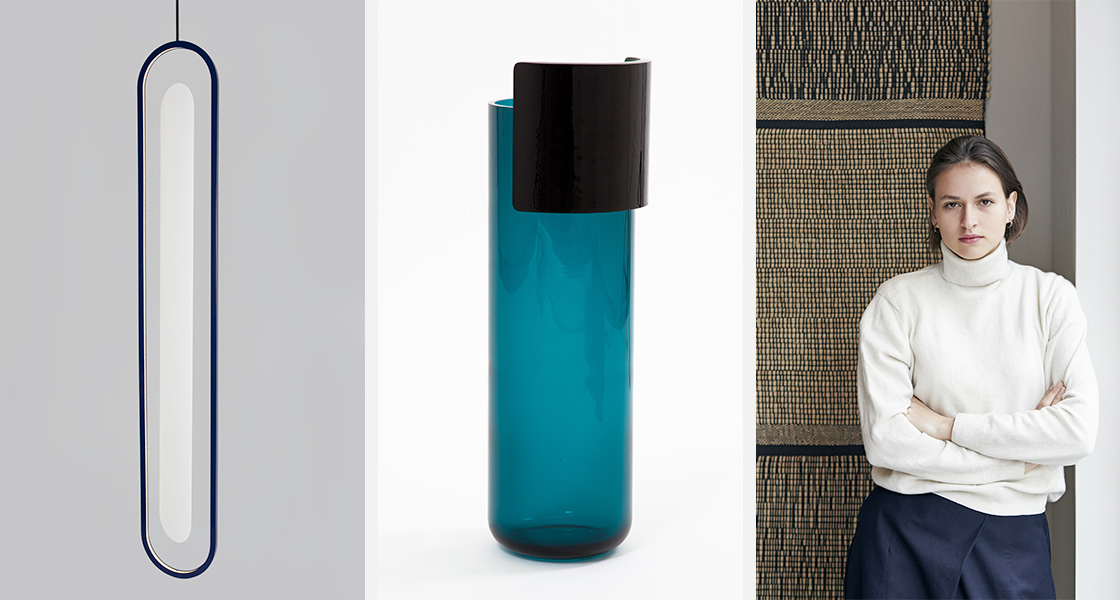
Who are your design icons?
I’ve always really loved Poul Kjaerholm’s objects for the way he managed to create things that are really elegant, but with great rationality. I also admire Charlotte Perriand’s approach. She was really daring in her designs. They’re inventive, intelligent and quite simply beautiful. I like what they give off in terms of an image of femininity. Her work is a question of balance, inventiveness, a sensibility for shapes and an intelligence in the way it’s made.
In 2017, you spent five weeks in residence at the Casa Wabi on the Pacific Coast of Mexico, where you collaborated with a local palm weaver to produce a beautiful curved screen. How was that experience?
What was quite striking is that it’s a completely different approach to craftsmanship compared to Europe, where it’s more a question of quite exceptional savoir-faire. In Mexico, it’s more akin to creating things for daily life, with a certain rusticity, but also great beauty.
You have said that you see moving between one-off designs and industrial production as a sort of continuity. Can you say a little more?
I approach every project with the same attitude. In each case, what interests me is the savoir-faire, the precision in the way the materials are employed, and that things are done with passion. I like working with people who are devoted to what they do and have a perfectionist streak. At the end of the day, it’s not important whether an object is replicated just once or a thousand times. You can convey the same sensations, sensibility and vision of the world with a hand-blown glass vase or an industrially produced lamp.
LAURELINE GALLIOT
Nominated by the director of the Ecole Camondo, René-Jacques Mayer.
Laureline Galliot trained as a dancer and as a textile colorist before taking a degree in design at ENSCI-Les Ateliers in Paris. Using an iPad and virtual reality software initially developed for the animated film industry, she creates objects by sculpting with color. Four of them have already found their way into the French National Design Collection at the Centre National des Arts Plastiques in Paris.
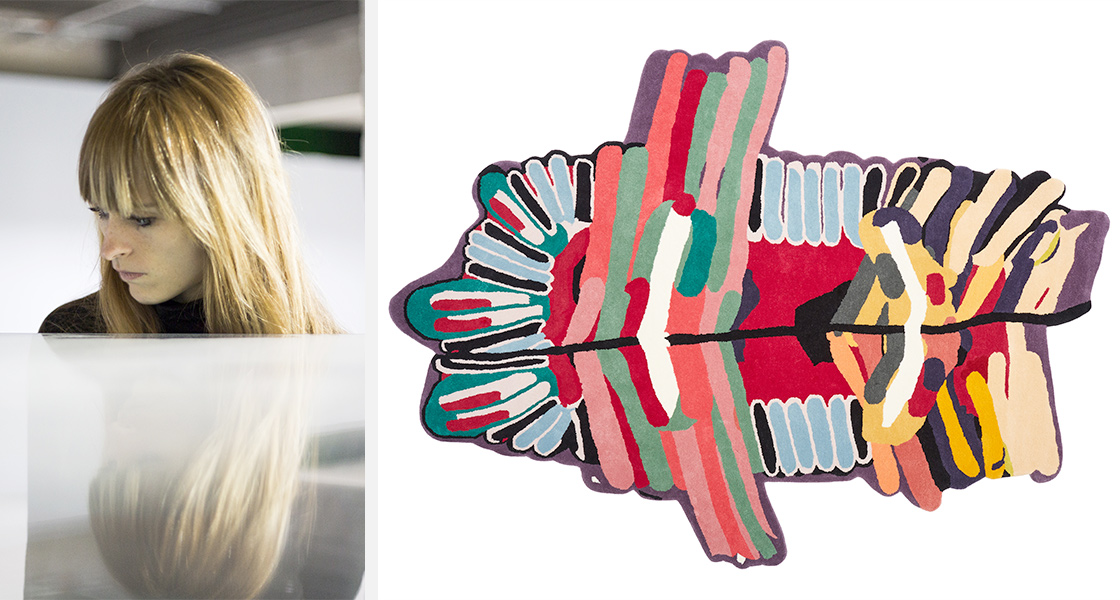
What place does color have in your work?
I studied textile design at the ENSAMAA fashion school in Paris, where I developed an eye for how to use it and I like the idea of introducing it into the world of objects. In mass production, it’s not something that’s really taking into full consideration. Products are often white, gray or black simply because they’re the cheapest hues. I’ve created a process that is half-way between design and painting. What’s important for me is to place color at the heart of my work, to invert the paradigm that it’s just a finishing touch. I see it more as material in itself.
How do you work exactly?
I started off using an iPad, but the ultimate fantasy was to be able to paint in 3D. It’s something that I’ve been able to do thanks to virtual reality software, which I first discovered at the Disney Research Lab in the States, where it’s used to draw cartoon characters. It’s a sort of Photoshop in three dimensions. I put on a headset and hold a joystick, with which I paint in virtual space. It’s a very gestural process, which is something you can see in the resulting objects. What’s great is that you can directly paint them to their actual scale, which is not something you can always do on a computer screen. Then, I simply press a button and print them out in 3D.
You’ve talked about your work being “a manifesto for accepting things that are deformed or misshapen”. Can you say more?
That’s something very dear to me. I’m really passionate about the way industry has distorted things, even in the food sector. There’s a standardization of forms, with only shapes that can be easily molded. We’ve ended up producing vegetables in that way. They all have to be perfect geometrical forms. There’s no longer a place for anything misshapen. I want to reeducate people’s eye to things that are less industrial and more organic, where the ultimate goal is no longer a sort of perfect rigor.
MATHIEU PEYROULET GHILINI
Nominated by designer, Pierre Charpin.
Mathieu Peyroulet Ghilini first came to prominence after winning the Jury Grand Prize at the Design Parade at the Villa Noailles in 2013 for his project Sophistication. As part of the award, he participated in residences at the Sèvres ceramic factory and the International Centre for Research in Glass Art (CIRVA) in Marseille. His work, which is characterized by an interplay of simple geometric forms, has been exhibited at the Pompidou Center in Paris and the French Institute in Cologne.
How would you describe your overall approach to design?
I think it’s really linked to the dissertation I wrote at the end of my degree. What basically interests me is to know why things with the same function have different forms. Why one table leg can be very strict and straight, and another really fluid? Why a designer choses one aesthetic rather than another? It was the starting point for my Sophistication project. I took a piece of wood that was 3cm thick and joined it in different ways. The result was four different trestles, which are aesthetically diverse, but were all created by me.
How did your Mur de Sèvres partition made from porcelain and rope come about?
I was asked by the creative director at Sèvres at the time to demonstrate not only the beauty of porcelain, but also its strength. I also had to combine it with another material. I began to work with rope and came across a photo of the art patron Marie-Laure de Noailles in her Paris town mansion and saw she had rope trellises on which she would hang her paintings. I was attracted to the fact that rope is both elegant and inexpensive. As for the porcelain elements, a lot of weight is exerted on them. I liked the idea that if they fall to the ground, they break into a thousand pieces, yet at the same time they’re capable of supporting a force of 50kg on both sides.
You do lots of drawings and paintings. What is their place in your work?
They are absolutely essential. It’s very complicated to design objects. You’re always confronted by the logic of manufacturers, who say they should be like this or like that. At the end of the day, they’ve often been largely altered by all the people involved in the process and you always have to be attentive that the end result still corresponds to the essence of the project. With my drawings, it’s the complete opposite. They give me total freedom. I can sketch forms exactly as I’d like them to exist. They serve as a kind of reference for me.
NATACHA & SACHA
Nominated by the director of the Ateliers de Paris, Françoise Seince.
The Paris-based duo Natacha Poutoux and Sacha Hourcade is intent of revolutionizing the world of household electrical appliances and to bring design to fields where it is often ignored. The pair both graduated from ENSCI Les Ateliers and then trained with some of contemporary design’s most iillustrious names—the Bouroullec brothers and Stefan Diez for Natacha, India Mahdavi for Sacha. They founded their own firm in 2017.
Why are you so interested in working on technical products?
Natacha: Nowadays, technical or electrical objects are generally conceived by engineers, whereas we’d like to approach designing them in the same way as you would a chair. We also want to introduce different savoir-faire and materials. At present, companies tend to make everything out of plastic.
Sacha: For example, we’ve created an air humidifier, in which the water container is made of glass. That brings up new questions about its life cycle. What do you do with it afterwards? And do you place it somewhere visible or do you continue to hide it like most other humidifiers today?
In a YouTube video about your Computer Variations project, you said, “We think universal should not mean standard”. What exactly do you mean by that?
Natacha: It was a project in which we tried to rethink the computer. When Apple creates a new model, it tries to come up with something that corresponds to the most people possible. Hence, it’s a really standard product. With Computer Variations, we said to ourselves, let’s try to imagine a computer for each specific profession—the best one possible for an upholsterer, the best one for an accountant… That way, you make the product less standard and instead reply better to the needs of each individual.
You seem to have a fascination with heating. Two of your most striking projects to date are the Briques radiator and the Parterre heated rug.
Natacha: Both projects came about at the same time. It’s just that we came up with two very different solutions to the same problem—how to heat large spaces while at the same time reducing their overall temperature, because heating is one of the main causes of climate change.
Sacha: With Parterre, the aim was to bring heat as close to the body as possible so that it would be local rather than warming the whole room. The project was inspired by Japanese lifestyle, where they heat specific zones rather than a whole room. The rug adopts technology from the car industry, where heated threads are hidden under seats. We decided instead to use them for ornamentation by embroidering them with a CNC machine. As for the radiator, the idea was to introduce a new material—refractory brick. It’s more noble and provides the object with a new status. It’s not something you want to hide anymore, but rather you want to display it, just like you would a chair or a table.
WENDY ANDREU
Nominated by the president of the Fondation Lafayette Anticipations, Guillaume Houzé.
A graduate of both the Ecole Boulle in Paris and the Design Academy in Eindhoven, Wendy Andreu places a particular focus on materials. In 2017, she won the Dorothy Wasman Textile Design Award during New York’s Textile Month for her innovative fabric Regen. Her clients include fashion designer Rick Owens and the London design studio Toogood. She is also represented by the prestigious Milan-based design gallery, Nilufar.
How important is craftsmanship in your work?
I studied metalwork at the Ecole Boulle and then did a Bachelor in Design in Eindhoven. The way I approach my projects is very physical. I like to test things and see how materials react together. It’s not necessarily something that’s very in fashion at the moment. Everyone is crazy about technology, where everything is virtual and happens via intangible things like apps. At the end of the day, what I do is for human beings with senses, who want to see something, feel something, touch something. For me, the process is almost more important than the end result.
How did Regen come about?
It was my degree project in Eindhoven. It began in 2014, but I’ve continued developing it since then. We had to work on materials and I decided to move out of my comfort zone and chose textiles. I don’t like sewing or knitting machines. So, I chose to develop my own technique to create objects made from fabric, using my know-how in metal. I develop the forms on a computer and then laser-cut them in metal to obtain molds around which I first wind rope and then coat it in silicone or latex. Once it’s dry, I remove the mold and have a waterproof textile that looks almost like it’s been printed in 3D. There are no stitches. So, it’s quite different from the traditional way of producing a garment.
What particularly interests you at the moment?
I’m quite fascinated by molds in general. At the end of the day, that’s what Regen is about. I like them because they allow you not to waste any material, which is not the case when you sculpt something or work with wood, for example. For me, it’s important to think up techniques where nothing needs to be discarded.
